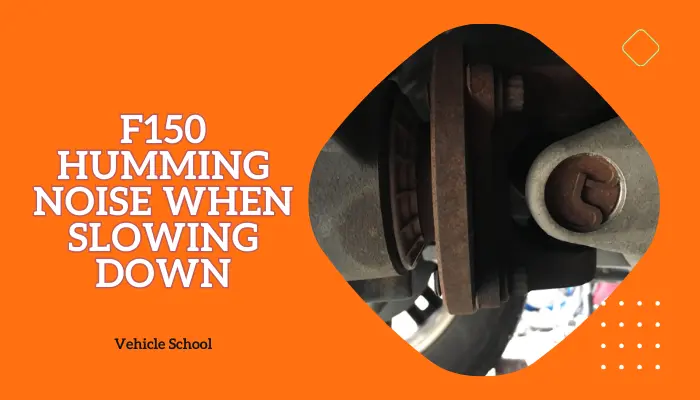The “power reduced to lower engine temperature” message shows up in your F150 when your truck’s engine is overheating.
Keep reading to learn what caused the reduced engine power message in your F150 and what you can do to fix it.
Why Does Ford F150 Say Reduced Engine Power?
Ford F150 Shows Power Reduced To Lower Engine Temperature alert because of a bad water pump, a blocked radiator, or coolant problems like leaks or bad coolant. Also, sensors like the CHT (Cylinder Head Temperature), MAF (Mass Air Flow), or thermostat sensors can cause issues by giving the wrong information.
Here are all the details about the reasons for engine power reduction warnings.
1. Your Truck Has Bad Coolant
Coolant can degrade over time due to chemical reactions, contamination, and loss of its protective properties.
This coolant degradation can be caused by not replacing the coolant at the recommended intervals, or using the wrong type of coolant for the vehicle.
When coolant is no longer effective, it cannot properly absorb and dissipate heat from the engine. This leads to your F150 overheating, as the engine temperature rises beyond safe operating limits.
The engine control unit (ECU) will detect the high temperature and trigger the “Power Reduced To Lower Engine Temperature” message to prevent damage by reducing engine power, thus generating less heat.
2. Coolant Leak In Your F150
Coolant leaks can occur due to worn hoses, a cracked radiator, a faulty water pump, or a damaged head gasket.
These components can deteriorate over time, especially under extreme temperature fluctuations and pressure conditions.
A coolant leak results in a loss of coolant volume, reducing the system’s ability to cool the engine effectively. This leads to an increased risk of overheating.
To protect the engine, the ECU reduces engine power when it detects low coolant levels or high temperatures to prevent further overheating and potential engine damage, showing the “Power Reduced To Lower Engine Temperature” message.
3. The Radiator In Your F150 Is Restricted
Coolant can deposit minerals and debris within the radiator, especially if the coolant is old or contaminated. Rust and scale from the engine block can also accumulate.
These deposits restrict the flow of coolant through the radiator, reducing its ability to dissipate heat effectively. This restriction can prevent the engine from being cooled well enough.
When this happens, the ECU does the same thing as earlier.
4. Your F150 Temperature/Thermostat Sensor Is Broken
The thermostat sensor, or the thermostat itself, can fail due to wear and tear, corrosion, or blockage by debris. This sensor helps regulate the opening and closing of the thermostat based on coolant temperature.
A faulty thermostat sensor may incorrectly indicate that the coolant temperature is lower or higher than it is.
If the thermostat remains closed when it should be, the engine can overheat.
5. CHT or MAF Sensors Have Gone Bad
The CHT sensor can fail due to electrical issues, corrosion, physical damage, or simply age.
Exposure to high temperatures and harsh conditions can accelerate its degradation. The CHT sensor monitors the temperature of the cylinder head and provides data to the ECU.
A faulty CHT sensor can send incorrect temperature readings, making the ECU think the engine is overheating even if it’s not.
The MAF sensor can become contaminated with dirt, oil, or debris or it can suffer electrical failures. This sensor measures the amount of air entering the engine, which is crucial for the correct air-fuel mixture.
Such an MAF sensor can lead to an incorrect air-fuel mixture. If the mixture is too lean (too much air, not enough fuel), the engine can run hotter than normal.
6. Your Truck Has a Faulty Water Pump
The water pump can fail due to wear and tear, corrosion, or bearing failure. It’s responsible for circulating coolant through the radiator and engine.
A failing water pump cannot maintain proper coolant flow, leading to reduced coolant circulation through the radiator. This results in higher engine temperatures.
How to Fix Reduced Engine Power Ford F150?
These fixes are primarily for the 5.0L engines, as they tend to overheat a little more easily. But you can also use them to fix issues with any EcoBoost and PowerBoost engine.
Before trying any of these though, clean the coolant system first. Having the wrong coolant or a bad mixup of coolants is also a basic but common error.
Drain And Replace The Coolant
- Ensure the engine is cool.
- Open the hood, apply the handbrake, and chock the wheels.
- Remove the expansion tank cap and place a container under the radiator drain.
- Open the drain fitting and drain the coolant. Check and replace damaged hoses or clamps. Close the valve.
- Fill with water, start the engine, heat, turn off, cool, and drain. Repeat until the water is clear.
- Close the drain and fill it with new coolant to the max mark.
- Cap the tank, start the engine, run, rev to 3500 rpm for 30 seconds, turn off, and cool.
- Open the cap, top up the coolant above the minimum mark, and cap.
- Start, heat, rev, idle, then cool.
- Add coolant if needed, squeeze the hose to expel air, and check for leaks. Set the heater to max.
Replace F150 Coolant Tank/Reservoir
- Ensure the engine is cool.
- Open the hood and disconnect the MAF sensor.
- Loosen the worm clamp on the air intake hose.
- Remove the top part of the air filter housing and the air filter.
- Remove the bolts securing the combined unit.
- Disconnect the hose from the radiator to the reservoir.
- Lift out the air filter housing and reservoir unit.
- Position and secure the new reservoir unit.
- Reconnect the radiator hose and tighten the bolts.
- Reassemble the air filter housing and reconnect the MAF sensor.
- Fill the reservoir with coolant to the max mark.
- Start the engine, check for leaks, and ensure warm air from the heater.
- Cool the engine, check and adjust the coolant level if needed.
Look At The Radiator
This fix job isn’t particularly hard, but it’s far more involved. I’ll only provide the basic overview here, you can follow along with the video by the end if you need the full process.
- Disconnect the battery and set the parking brake.
- Open the hood and collect a fluid container.
- Access and drain coolant using the radiator bleed screw.
- Remove fan assembly, air intake duct, and radiator cap.
- Disconnect the hoses and remove the old radiator.
- Install new radiator, hoses, and reconnect fan assembly.
- Reassemble components and tighten screws.
- Refill the radiator with coolant and purge air from the system.
- Flush any extra coolant and make sure you’ve purged all the air.
The process in the video is for 2014 F150s and below, but the radiator is still one of the easiest things to remove, so you can simply improvise on the fly if your trim is different.
Replace The Thermostat
Doing this should take care of any issues with the temp sensor. Just do this:
- Disconnect the battery and set the parking brake.
- Locate and remove the intake duct.
- Pinch off hoses to minimize coolant loss.
- Use a socket wrench to remove the thermostat housing bolts.
- Replace the thermostat and reassemble the housing.
- Refill coolant and tighten the radiator cap.
- Start the engine and let it reach normal operating temperature.
- Check for leaks and top up coolant if needed.
- Test drive the vehicle to ensure thermostat functionality.
Swap The CHT Sensor
- Ensure the engine is cool and the parking brake is engaged.
- Open the hood and locate the CHT sensor.
- Remove the wheel well cowling to access the sensor.
- Disconnect any obstructing pipes or wires to create space.
- Use a socket and extension to reach the sensor.
- Disconnect the sensor’s wiring harness.
- Carefully unscrew and remove the old sensor.
- Install the new sensor and reconnect the wiring harness.
- Reassemble any removed components.
- Test the sensor to ensure it works.
Clean The MAF Sensor
From what I’ve seen, this sensor doesn’t break as often as the other ones, it simply gets dirty. You can follow these steps to clean it:
- Disconnect the mass airflow sensor (MAF) connector.
- Use a screwdriver to unlock the clip securing the connector.
- Loosen and remove the sensor from the air intake.
- Unscrew the sensor’s cover using a T20 torx bit.
- Spray the MAF sensor with MAF sensor cleaner.
- Do not touch the sensor wires with anything.
- Allow the sensor to air dry completely.
- Reattach the sensor cover and tighten the screws.
- Reinstall the sensor into the air intake.
- Reconnect the MAF sensor connector.
Replace Water Pump
This is another thing that directly causes engine overheating, so getting it replaced should help.
- Park and cool down the engine.
- Place a catch pan under the radiator.
- Disconnect hoses, electrical, and air intakes.
- Loosen pulley bolts and remove the alternator belt.
- Remove the alternator belt tensioner and AC belt.
- Remove the thermostat housing and thermostat.
- Detach the remaining bolts from the water pump pulley.
- Remove the water pump and discard the old seal.
- Clean surfaces and install a new pump.
- Torque mounting bolts and reinstall components.
- Refill the coolant and check for leaks.
If you somehow still have an overheating engine, then it might be the throttle position sensor – that’s the rarest reason. It doesn’t happen as often, so I won’t include the steps here. But you can find the replacement steps in my F150 throttle response fix guide.
How To Bypass Reduced Engine Power In Ford F150?
You can’t permanently keep this mode from switching on. However, you can temporarily get out of this F150 Engine Failsafe Mode by doing a soft reset.
Do that by either turning your ignition off for 10 seconds and restarting, disconnecting your battery, or both.
Sometimes, this issue can come up for a minor system glitch – so you might get rid of it for good.
But if you still end up seeing the Reduced Engine Power message again after some time, you should do proper troubleshooting.
FAQs
Is it safe to drive your truck with engine power reduced?
It’s safe to drive with the engine power reduced message since the truck already takes the safety precautions for you. However, you might have to deal with the F150 Limp Mode being on for the whole truck.
Final Thoughts
That should bring your engine coolant temps to normal, as well as the engine itself.
You won’t have to deal with that Reduced Engine Power message in your Ford F150 any longer – and you’ll be free from other alert signs like the Wrench Light.
Be more proactive about preventing this issue the next time – it won’t turn your engine into a ticking time bomb, but can still cause significant damage.






